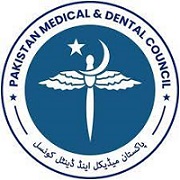IDENTIFYING BARRIERS IN E – LEARNING, A MEDICAL STUDENT’S PERSPECTIVE
Abstract
Objective:
To recognize the barriers in different modes of e learning, from the medical student’s perspective during the period of Covid 19 pandemic.
Study Design:
Quantitative, Descriptive survey.
Place and duration of Study:
This study was conducted in Islamic international medical college and Islamabad medical and Dental College.
Material and Methods:
This study was conducted at Islamic international medical college and Islamabad medical and Dental College after taking permission of ethical committees. A questionnaire was designed for data collection. Common barriers were identified along with the factors underlying these problems. In this study, sample size was 400 medical students belonging to tertiary institutions of Rawalpindi and Islamabad district. Simple random sampling technique was applied for selecting the respondents. A questionnaire comprising of closed ended questions was designed and its content validity was checked after presenting it to at least five faculty members and then it was presented to the participants. Data collection was done and results composed using SPSS.
Results:
The final sample size for responses was 417.
Competency in the usage of technology and internet is the key to the E- learning. Only 18.5% of students were competent to practice the technology and internet form. 47.7% of students were never competent. 32.4% answered with sometimes. The 26.4 % of students found that the E-learning system was useful to fulfill their academic learning demands. 36 % of students answered that it is not and 36.2% answered with sometimes.
The E-learning system being used was found, compatible with the course contents by 26.2 % of students. 45.8 of students answered that it is not compatible. 26.6% answered with sometimes.
Only 18.7 % of students found the E-learning system being practiced in their institution was well planned to satisfy their learning objectives. 38.4% answered with sometimes. 41.5 % responded with the answer that it was not well planned to satisfy their learning objectives.
25.6 % of students felt comfortable with the features of E-learning system being used. 41.7 % of students answered that it was not. 31.2% answered with sometimes. The e-learning system provides sufficient learning resources to control their distinct learning was found by 25.6% of students, 38.4 % of students answered that it is not satisfying for them. 34.5% answered with sometimes.
The design and interface of the e-learning system used is smart and suitable was found by 21.1% of students. 46.3 % of students answered with not. 31.2% answered with sometimes. 25.1 % were able to identify their personal learning preferences on an e-learning course”. 33.4 % of students answered that they were not able and 40.0% answered with sometimes.
13.9 % of students needed guidance to select their personal learning choices for an e-learning course. 43.9 % of students answered that they don’t need it. 40.8% answered with sometimes. 22.8 % found the E learning system was against their learning preference. 41.7% answered that it is not against their learning preference and 34.1% answered with sometimes. .
22.1 % of students, found that E-learning is less interesting as compared to conventional learning. 48.2 % of students considered it interesting most of the times and 28.3% answered with sometimes.
20.4 % of students found that E-learning resulted in lack of interaction among the colleagues and was less creative. 50.4% of students answered that it was not resulting in lack of interaction among the colleagues and less creative, 27.8% answered with sometimes.
Regarding the motivation of students by the use of E-learning, to use computers and the internet and in turn ease their access towards latest knowledge, and 20.9 % agreed with it. 46.8 % of students answered that it was not. 30.9% answered with sometimes. 21.1 % of students found that use of technology leads to tiredness and decline in working capacity. 52.0 % of students answered responded that it did not and 25.4% answered with sometimes.
18.5 % of students found that Interruptions in the internet connectivity affect the learning process leading to distraction”. 60.5 % of students answered that it was not. 20.1% answered with sometimes.
E-learning saves time and is cost effective and can save costs on transport and time consumed in travelling along with its stresses 22.3 % of students agreed with it. 47.2% of students did not agree with it. While 29.0% answered with sometimes.
Regarding the concern about the validity of online teaching and assessment, 21.1% of students agreed and thought it was valid. 39.5% of students answered that it was not. 37.9% answered with sometimes.
Conclusion:
Medical students were not very much useful to this type of teaching so they found it less interesting and faced problems due to lack of competency in using the gadgets and had difficulties in understanding of the course content as well as solving their queries regarding the syllabus. Their peer learning was also effected further leading to decreased understanding and losing their interest in the course. In spite of the fact that they had found this type of learning cheaper in view of transport charges and time consumption but still they do not seemed to be completely satisfied with this type of learning. Students also expressed their concerns regarding assessment of such type of learning.






